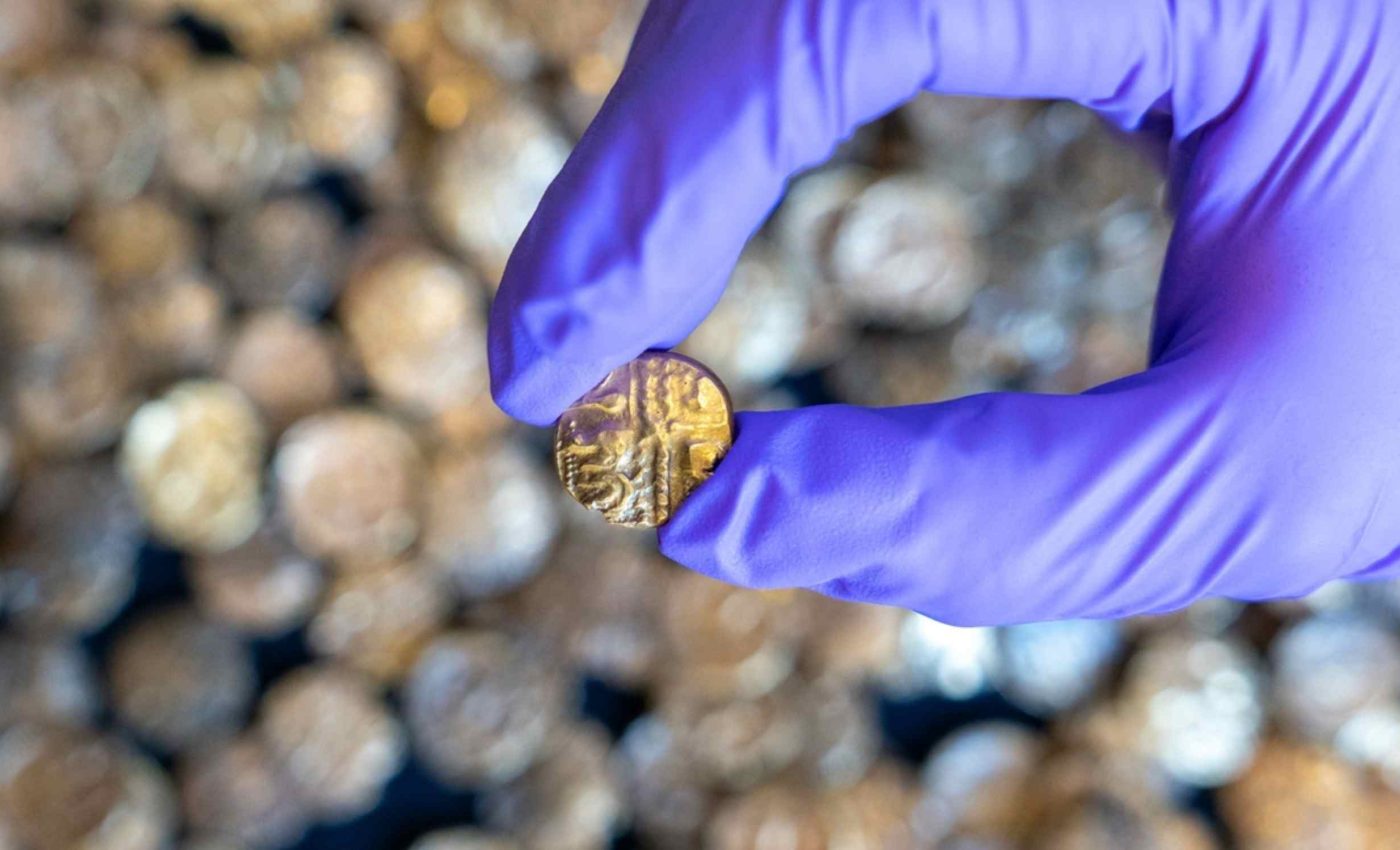
Over 1,000 gold coins from the 1st century BC discovered with a metal detector
A metal detectorist in Great Baddow, Essex, uncovered 933 gold coins dated to 60 to 20 BC, the largest Iron Age gold coin hoard recorded in Britain.
The trove, soon to be exhibited by the Museum of Chelmsford, offers a clear snapshot of money, power, and politics at the end of pre-Roman Britain.
Baddow coin hoard
The Great Baddow Hoard includes an extraordinary run of coins consistent in weight and design, plus a few outliers that help date and place the deposit.
Among the 933 pieces are 930 Eastern British stater coins of the Whaddon Chase type, a style of late Iron Age gold coin marked by a stylized horse on one side and abstract patterns on the other
These coins were minted in southeastern Britain around 60 BC, with three additional coins of different origins.
Numismatists use “stater” for a standard gold denomination common in late Iron Age Britain.That uniformity suggests an organized source rather than random accumulation.
Why the timing matters
These coins were minted as local groups in southern and eastern Britain began producing their own currency after a period of importing continental issues.
Coins were first brought from Gaul around 150 BC, and communities soon started minting regionally distinctive types.
This shift tracks a wider political story that included tensions among neighboring tribes and the pressure of Roman campaigns across the Channel.
Baddow coins are evidence
A museum curator explained that most of the coins in the Great Baddow Hoard likely originated in territory later linked to the Catuvellauni tribe and may have been assembled as a tribute payment to Julius Caesar.
The hoard’s presence in what was traditionally Trinovantian land suggests shifting power or influence between local tribes during the period of Caesar’s second invasion.
The hoard was found in 2020 and formally secured for the Museum of Chelmsford in May 2025, with public funding underwriting acquisition and community work around the collection.
Plans call for a first public display beginning in 2026, followed by a permanent gallery installation that anchors Chelmsford’s ancient story.
The museum setting will allow specialists to analyze die links, metal composition, and circulation patterns without breaking the hoard’s context. That is essential for drawing careful conclusions from a single deposit.
How Iron Age coins were made
Late ron Age coins were struck by hand with engraved dies, often showing abstract motifs on one side and a stylized horse on the other.
Whaddon Chase staters were minted in the North Thames area, typically with a naturalistic horse.
The “Whaddon Chase” label comes from an 1849 Buckinghamshire discovery that set a benchmark for style and distribution across the eastern counties.
Those parallels explain why specialists quickly recognized the Baddow pieces as part of the same regional tradition.
What happens when finds are not reported
Archaeology works best when finds are recorded promptly and legally.In this case, the finder lacked permission and failed to declare the hoard under the Treasure Act 1996, and later legal proceedings and valuation decisions reflected those actions.
The result still preserves the hoard for the public, but the initial delay reduced what experts could learn from the original findspot.
Context, down to soil layering and container remains, often holds as much information as the artifacts.
Baddow coins and history
The hoard’s date range aligns with a turbulent generation in southeastern Britain.
Roman accounts talk about shifting alliances and pressure during Julius Caesar’s second invasion in 54 BC, while regional groups such as the Trinovantes and Catuvellauni wrestled for advantage.
The coin mix hints at movement across tribal lines into territory around Chelmsford. That pattern matches written sources but gives them archaeological weight.
Expect small, bright pieces that speak a visual language of power. Look for the running horse motif on the reverse, a signature of eastern issues that ties the Baddow pieces to the broader Whaddon Chase family.
On the obverse, expect abstracted forms derived from earlier continental prototypes. The artistry varies, but the intent is consistent and confident.
Why the Baddow coins matter today
With hundreds of near-contemporary coins in one deposit, researchers can test hypotheses about minting sequences and tribal influence without sampling across many sites.
They can also assess whether the uniformity reflects tribute, emergency storage, or a political transfer of wealth. As new analyses come in, the Baddow dataset will sit alongside other eastern finds to clarify who struck what, where, and why.
For local residents, the hoard makes the late Iron Age immediate and tangible. For students of money, it shows how imagery, metal choices, and die work carried messages about identity and control long before Roman rule.
For visitors, it frames Chelmsford within a wider story that stretches from Gaul to the North Sea. For archaeologists, it is a rare chance to test written history against material facts with a single, coherent deposit.
—–
Like what you read? Subscribe to our newsletter for engaging articles, exclusive content, and the latest updates.
Check us out on EarthSnap, a free app brought to you by Eric Ralls and Earth.com.
—–













